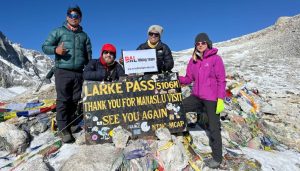Here’s an overview of Nepal’s seasons and the optimal windows for different kinds of travel—trekking, cultural sightseeing, wildlife safaris, etc.—so you can pick the best time based on your interests and regions:The best time to visit in Nepal is during the autumn (September to November) and spring (March to May) seasons. Here’s why:

Best Time To visit in Nepal
1. Autumn (September – November)
-
Why go:
-
Clear skies & stable weather across the Himalaya—panoramic mountain views from Everest to Annapurna.
-
Moderate daytime temperatures (10–20 °C at mid‑hills; –5–10 °C at higher camps).
-
Dry trails and minimal leeches in lower jungles.
-
-
Highlights:
-
Peak trekking season (Everest Base Camp, Annapurna Circuit).
-
Major festivals: Dashain (late September–early October) and Tihar (October–November).
-
-
Crowds & costs:
-
Highest tourist numbers → early booking recommended.
-
2. Spring (March – May)
-
Why go:
-
Blooming rhododendrons color the forests—and blossoms in Kathmandu Valley.
-
Warmer temperatures (15–25 °C in hills; 0–15 °C in high passes).
-
-
Highlights:
-
Secondary trekking season—excellent for clear views plus fewer crowds than autumn.
-
Buddha Jayanti celebrations (April/May).
-
-
Considerations:
-
Late spring (May) starts to get hazy, warmer at lower elevations.
-
3. Winter (December – February)
-
Why go:
-
Off‑peak: quieter trails, lower prices (lodges, permits).
-
Sunny days in Kathmandu and Chitwan (5–18 °C).
-
-
Highlights:
-
Low‑altitude treks like Ghorepani Poon Hill or Helambu remain feasible.
-
Wildlife spotting in Chitwan and Bardia National Parks as vegetation thins.
-
-
Limitations:
-
High‑altitude routes (Annapurna Circuit passes, Everest) often blocked by snow.
-
Nights can dip below –20 °C above 4 000 m.
-
4. Monsoon (June – August)
-
Why go:
-
Lush landscapes and terraced hills in mustard-green.
-
Best deals on tours, accommodations, and flights.
-
-
Highlights:
-
Rafting on swollen rivers (Trishuli, Seti).
-
Cultural stays in Tharu villages of the Terai.
-
-
Drawbacks:
-
Heavy rains, landslides, leeches, high humidity.
-
Treks above 3 000 m often wet and slippery—generally not recommended.
-
Regional Recommendations
| Region | Best Season(s) | Notes |
|---|---|---|
| Kathmandu Valley | Oct–Nov, Mar–May | Ideal for temples, festivals, and trekking preparation. |
| Everest Region | Sep–Nov, Mar–May | October offers clearest views; spring rhododendrons bloom. |
| Annapurna Region | Sep–Nov, Mar–May | Trails are driest in autumn; cooler in spring. |
| Lowlands (Terai) | Dec–Feb, Mar–May | Winters are pleasant; monsoon floods possible. |
| Chitwan/Bardia Parks | Dec–Feb, Mar–May | Dry season for best wildlife sightings. |
Festivals & Cultural Highlights of Nepal
-
Dashain (late Sep–early Oct): Nepal’s biggest Hindu festival—family gatherings, animal sacrifices, swings, tika blessings.
-
Tihar (Oct–Nov): Five-day festival of lights—decorated homes, worship of animals (crows, dogs, cows), and sisters’ blessings.
-
Holi (Mar): Color‑throwing spring festival—great fun in Kathmandu and Pokhara.
-
Biska Jatra (mid-Apr): Unique chariot festival in Bhaktapur.
Packing & Practical Tips
-
Layering: Thermals + fleece + windproof shell for the hills.
-
Rain gear: Essential—even in spring/autumn there can be showers.
-
Permits: Obtain TIMS and national park permits in advance (esp. for autumn).
-
Altitude: Acclimatize gradually—follow “climb high, sleep low.”
-
Health: Bring insect repellent for Terai; sunscreen for high altitudes.
Verdict
-
Overall “Best”: Mid‑September to early November—perfect balance of weather, views, and culture.
-
Runner‑up: March to mid‑May—great views plus flowering rhododendrons.
Choose based on your interests—peak mountain vistas, lush monsoon greenery or off‑peak tranquility—and you’ll have an unforgettable Nepal experience!
